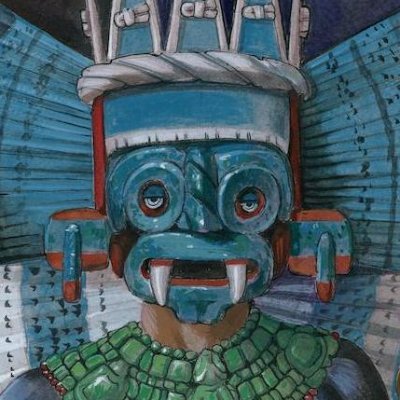The young woman here painted has a flower for a nahual or “animal-spirit.” She has the ability to transform herself into a flower, whose scent intoxicates all who smell it
Just as a snail emerges from a shell, a child emerges from its mothers womb, and the moon is reborn every month in the night sky. He is a lord of fertility, who guides us towards rebirth and renewal.
Tecciztecatl, the Lord of Snails, is the Teotl or “god” of the moon. He wears a large shell on his forehead or back as one of his principle symbols.
Happy Corn Day!
Maize is a gift of the Earth, our flesh and our sustenance, the sacred plant which gives its flesh in sacrifice for our sake
We celebrate and honor the base of Mesoamerican food on this very special date
The woman also has two black stripes painted on her cheeks. They are the “hua” stripes painted on the cheeks of Chalchiuhtlicue, and are symbols of fertility. The two stripes together suggest the union of the couple, and the beauty they will bring together into the world
Therefore, their wedding garments link them to the first ancestors, and establish that they will themselves one day be ancestors in turn, and that the Teteo of love, youth, and joy, will bless them through all the days of their union
The couple are wearing symbols and face paint which identify them with Xochiquetzal and Piltzintecuhtli. Xochiquetzal is the “goddess” of love, and is also the name of the first woman born in the fifth creation, while Piltzintecuhtli is the “god” of the morning sun and youth
Thus, it constitutes the highest sacrifice we can offer. Nowadays, we pierce our fingertips and earlobes to give our teyollia as drops of blood
1/4
In this painting, Tlaloc, Lord Rain, steals the tongue of Cipactli, the Earth














